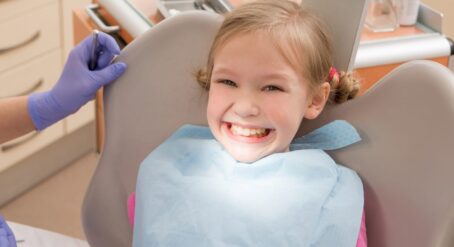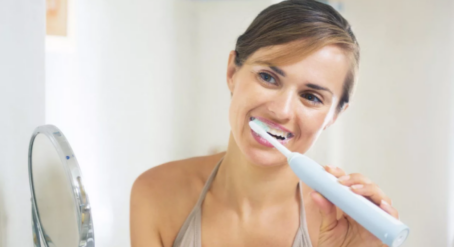Orthodontics is no longer just for children, and there has been a significant increase in the number of adults undergoing orthodontic treatment later in life.
The story about Leila McKinnon
In 2017, the Nine Network’s A Current Affair host Leila McKinnon made a brave, life-changing decision to undergo orthodontic treatment to straighten her teeth and bite.
The 43-year-old had lingual (inside) braces applied to correct an anterior open bite, which meant she found it difficult to chew her food and was rapidly wearing away her back (molar) teeth. When she arrived back to work after the procedure she began to prepare for the night’s show. Before she knew it, she was live on air – with a noticeable lisp.
But Leila was quick to reply on Twitter telling her fans about her new inside braces, who in turn told her she was “really brave” and got behind her decision to undergo orthodontic treatment as an adult.
Even though she made light of her temporary lisp, Leila was so grateful in the end when – after just a short period of her life – her teeth are now lovely and straight and her bite was corrected to help ensure that her teeth will last a lifetime.
Your teeth are such an important and worthwhile investment in life and a great smile can do wonders for your confidence. For those of you considering orthodontic treatment as an adult, here are a few tips and dispelled myths to get you started.
If a national TV newsreader has the confidence to undergo adult orthodontic treatment to straighten her teeth – so can you.
Is there such thing as being too old for orthodontic treatment?
There is no cut-off age for getting braces, which means your teeth can be straightened at any age. Saying that, having corrective treatment as an adult can be more complicated for a number of reasons including fillings, missing teeth or other dental issues. Your specialist orthodontist has a wealth of knowledge and clinical experience, which means that you should have no problem overcoming any challenge.
Whether you didn’t have access to treatment when you were younger, or if your teeth started shifting later in life, here are some answer to common questions and things to consider when pursuing the perfect smile as a ‘mature age student’:
What sort of braces should I get?
Orthodontics has come a long way since the days of metal braces. Modern treatment options include:
- Ceramic braces. Using tooth-coloured wires and brackets, these modern braces are much less visible.
- Lingual (inside) braces. This option places the brackets and wires on the back side of the tooth, making them virtually impossible to see. Because of their location closer to the tongue they do take a little longer to get used to and also require extra time to clean well.
- Metal braces. The classic braces, which many adults are still happy to get (as they are often the most cost-effective option), trading several months with braces for lifetimes of beautiful smiles.
How about clear aligner treatment?
Clear aligners are one of the most common treatment options for adults. A series of removable, clear plastic trays are used to gently guide teeth into their new position. They’re custom-made and fit snugly on your teeth, a bit like a small mouthguard. Clear aligner treatment is suited to correct problems such as crooked, gappy or protruding teeth. Another reason to love clear aligners is that your review appointments can often be spaced out to suit a busy work schedule.
How long will it take?
The average time frame an adult will wear braces can be anywhere between 6 months to 2 years, depending on the type of treatment you choose and the severity of your presenting problems. There is a common misconception that certain treatment options are faster, but this is incorrect. However, since clear aligner treatment requires consistent use to be effective, those who are unable to adhere to orthodontic guidelines to wear them for at least 22 hours a day may be better suited to a braces alternative.
Speech with adult braces
While it’s common for lingual braces to cause a slight lisp, we can assure you that metal and ceramic braces and clear aligners (e.g. Invisalign®, Spark® and 3M Clarity) won’t impede your speech in the long-term. A small adjustment period is often needed, but you will quickly get used to your new appliances and start to forget you’re wearing braces or aligners.
Can I still drink red wine and coffee?
Many of us enjoy a nice drop of wine now and then, but it’s high in acidity and can erode the enamel on your teeth when consumed frequently. Both coffee and red wine could cause slight discolouration of the teeth or the rubber o-rings which hold the wire into the brackets. Just make sure you regularly brush your teeth and drinking plenty of water to avoid this. If you are wearing clear aligners, please ensure to remove your aligners to drink any beverage except for cold water (as you do not want to damage your aligners with a hot drink or have sweet drinks inside your aligners)
What foods are off limits?
Slight modification in diet may be required, but that won’t necessarily be a bad thing. Most of the foods to avoid into are usually hard, sticky, sugary treats anyway! According to the ASO’s guidelines, the following should be avoided:
Hard lollies;
Gum;
Nuts;
Popcorn; and
Some raw vegetables such as carrots, however, there are other ways you can still eat these veggies, like steaming them.
Is it worth it?
Absolutely! Not only does orthodontic treatment straighten the teeth, create confidence and a more pleasant appearance, it can also help in preventing nasty tooth decay and other oral health issues. So whether you’re wanting to get orthodontic treatment to straighten your smile, align your jaw or even to help reduce your snoring, orthodontic treatment is definitely worthwhile.
What next?
Whether you’re considering traditional braces or a more invisible alternative to braces, only a specialist orthodontist has the training, experience and expert knowledge to be able to offer you the full suite of treatment options and give you the confidence that you’re in the best hands. Book a consultation with an ASO member orthodontist to find out which is right for your treatment needs and lifestyle.









